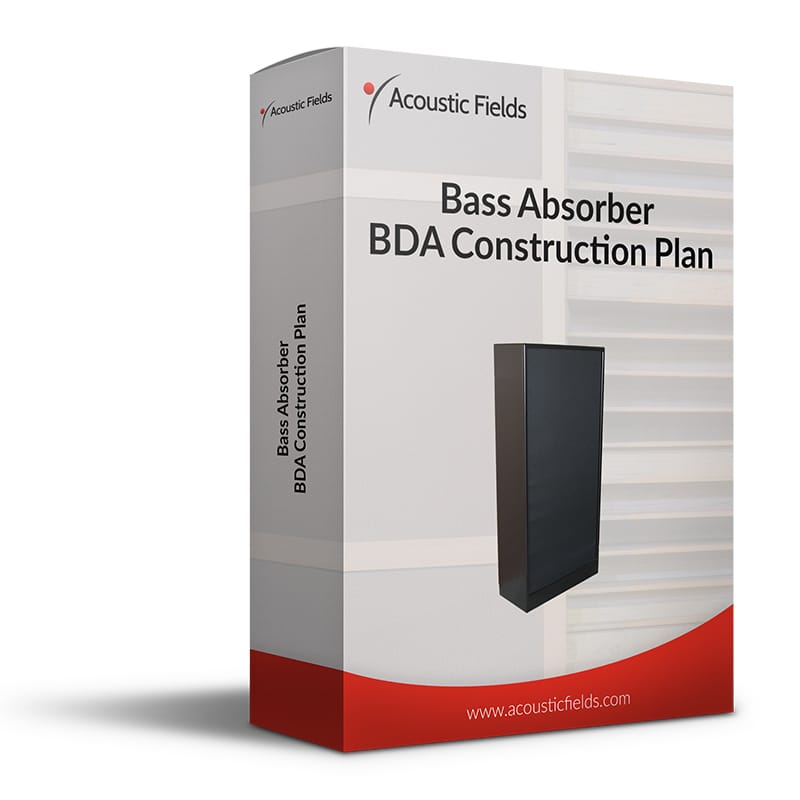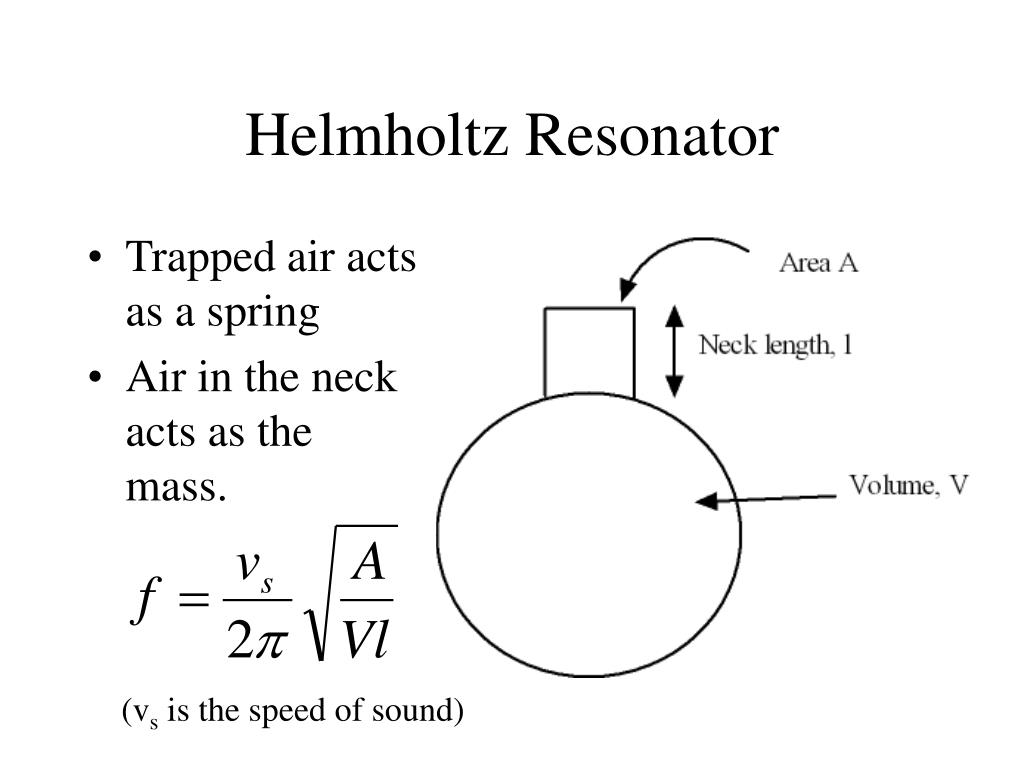DIY Bass Traps
DIY Bass Traps come in many forms and sizes. What you have to realize about bass or low-frequencies is that it is not “trapped” by anything. It is absorbed if you have the correct technology to deal with low-frequency energy waves. Waves of low-frequency energy can be 30′ to 40′ long. Nothing traps these long waves of energy. These are pressure waves so you need a technology that deals with sound pressure below 100 Hz. Energy above 100 Hz. is ray energy that moves in shorter straight lines. Both wave and ray energy require different treatment types. Let’s look at the definitions of both so you can see see the reasons behind the treatment types.
Wave Energy
We need to think of low-frequency energy as wave energy. Think of wave energy as ocean waves. Low-frequency energy oscillates through our rooms like the ocean waves crashing against the shore. They are a series of long, tall, and powerful wave energy that can go through solid concrete. Low-frequency energy is any energy below 100 Hz. Energy above 100 Hz. is ray energy or middle and high-frequency rays that are for our vocals. Low-frequency wavelengths have long lengths and heights. Take a look at the graphic below-showing wavelengths at each frequency below 100 Hz.
Ray Energy
Ray energy is middle and high-frequency energy. It is like sunshine. It is shorter in length and does not oscillate through your room like wave energy. It travels in straight lines and strikes your walls, floor, and ceilings. Ray energy is directly responsible for reverberation in our rooms. The accumulation of reflected energy contributes to high reverberation times which impacts speech intelligibility. Have you ever been in a room where the reverberation times were so high you could not hear the person next to you speaking? This is the result of ray energy reflecting off of wall surfaces.
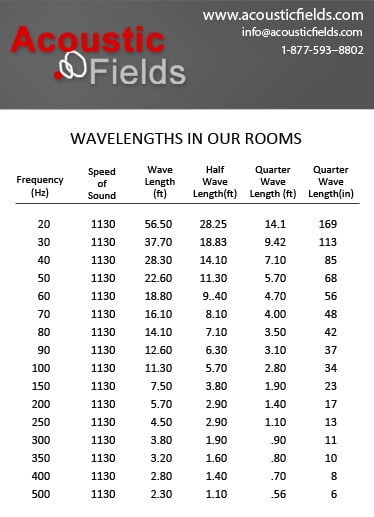
Length Of Wavelengths
Wave Technology
How do we absorb wave or low-frequency energy? We must use technology that deals with pressure waves. There are three main types of low-frequency absorption technology that are currently in use. There are Helmholtz, Membrane, and Diaphragmatic technologies. All three of these technologies are designed to be used in the task of absorbing low-frequency energy. Let’s examine each one and look at the features and benefits of both. If you are considering one of these three designs for your DIY bass traps you need to know the pros and cons of each design.
Helmholtz
A Helmholtz resonator is a chamber with a slot at the top of the chamber. Low-frequency energy enters the slot and is then sent into the chamber. The chamber has a certain volume and size which determines the resonant frequency of the unit. The resonant frequency is how low the unit will absorb down to. Helmholtz resonators are difficult to build and although they can be designed to go down to low-frequency ranges, they do not absorb much energy above their resonant frequency. Another issue they face is that you will need many units since the amount of low-frequency energy they absorb is small in comparison to the room’s needs. They also operate in a narrow frequency band so you will need to build many different units types to achieve absorption across a broad frequency range. As a DIY bass trap, the calculation process along with the build process is too complicated.
Helmholtz Resonators: https://en.wikipedia.org/wiki/Helmholtz_resonance
Membrane
A membrane absorber is a cousin of a diaphragmatic absorber. It has a membrane that moves in sympathy to sound pressure. It has a cabinet behind the membrane or diaphragm that has a size that is calculated to resonate at a certain design parameter. The cabinet is lightweight and when used in combination with the surface area diaphragm or membrane. The inside of the cabinet is filled usually with some type of building insulation. The issue with membrane absorbers is that they can go down into the low-frequency regions which are the level of absorption. However, they do not achieve much of a rate of absorption. They are not able to absorb as much energy as a diaphragmatic absorber per square foot of surface area. This means that you will need many units and still may not have enough to absorb the excess low-frequency energy within your room. As a DIY bass trap, it is not a difficult build but you will need to do many calculations.
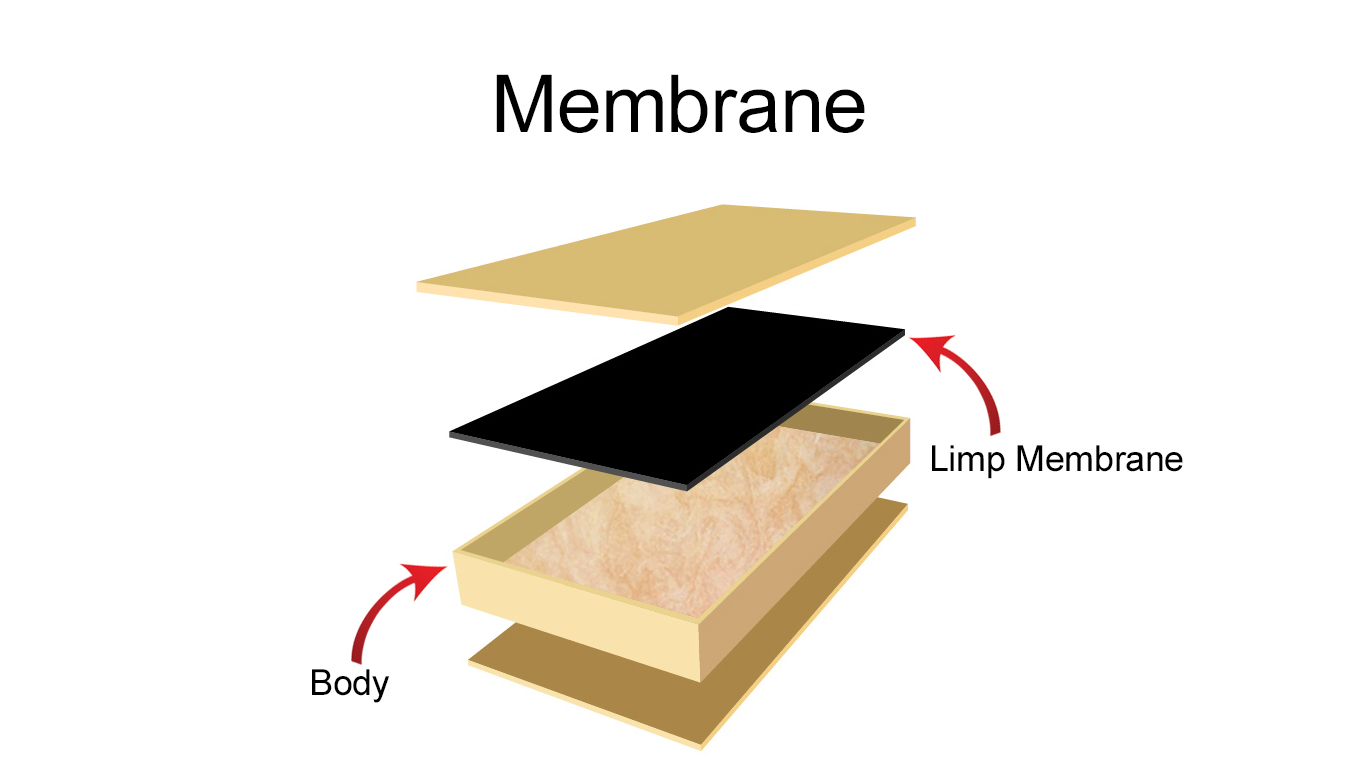
Exploded Membrane
Membrane Absorbers: https://soundbridge.io/membrane-absorbers/
Diaphragmatic Absorption
The most powerful of all the low-frequency absorption technologies is diaphragmatic absorption. It has a front diaphragm that has a calculated density. It has a cabinet that has a certain depth depending on the lowest frequency you are trying to absorb. The cabinet has an internal fill material that increases the rate of absorption if designed correctly similar to the internal fill materials used within both Helmholtz and Membrane. Diaphragmatic absorbers are heavy since mass and density are needed to achieve the highest rates and levels of all three types.
Diaphragmatic Absorbers: https://www.acousticfields.com/product-category/sound-absorption/acda-series/
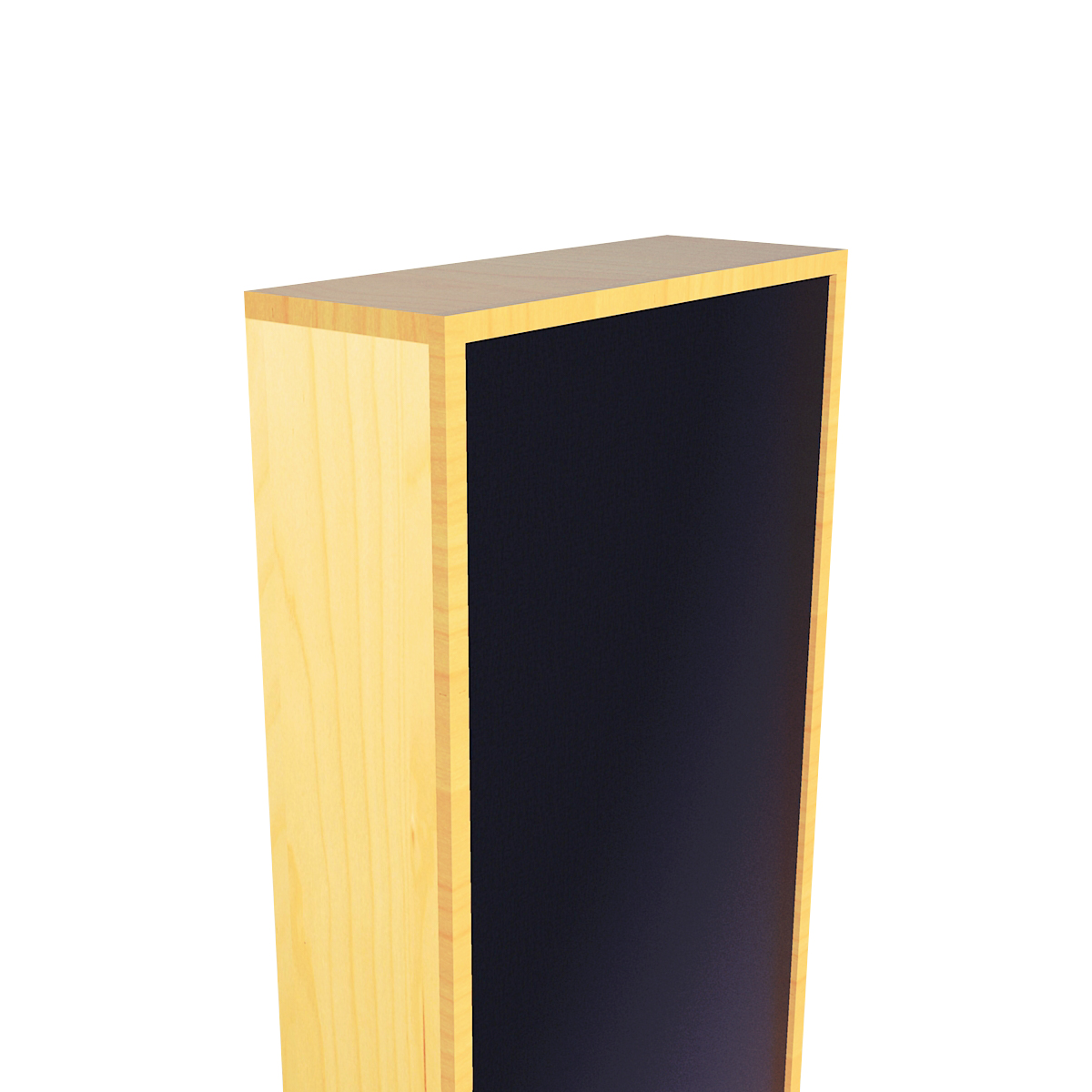
Acoustic Fields Carbon Panel
Function
The low-frequency pressure waves strike the front wall or diaphragm of a diaphragmatic absorber. We use two front walls in our designs that are out of phase with each other. This slows the pressure wave down. Once the energy strikes the front walls it then enters the inside of the cabinet where it finds the internal cabinet fill material. In our designs, we use activated carbon or charcoal. The increased absorption capacity of the activated carbon (one teaspoon has 100 square feet of absorption surface area), we use 60 lbs. of our carbon inside each unit. Once it enters the inside of the cabinet with all of that carbon, it experiences an atmospheric pressure reduction which causes parts of the low-frequency energy to collapse.
Acoustic Fields BDA / DIY Bass Trap
Our carbon technology is available for your DIY bass trap build. Our foam for the face is also available. If you place our foam technology on the face of our DIY / BDA unit you can extend the performance of each unit up to 6,300 Hz. We also offer our DIY bass traps build plans so you can build your own diaphragmatic absorbers. They come with a complete materials list, all sizes of each part that is required and the step by step assembly instructions to assist through the process. Telephone consultation is also available to help you through any issues you face during your build process. We ask that you have a full shop to work in along with a table saw, joinery and routing tools and strong working tables. An extra set of hands is welcome due to the weight of each unit. Make sure you place them on casters to make installation and tuning easier.
DIY Bass Traps: https://www.acousticfields.com/product/diy-bass-absorber-build-plans-bda-broadband-diaphragmatic-absorber/
Room Tuning
Each usage has its own room size and volume with width, height, and length. Every surface of the room contributes to certain frequencies and amplitudes of unwanted room modal energy. You must locate the frequency and amplitude issues within your room and make sure you have the proper type, amount, and positioning of that treatment in each room boundary surface area. We use the acronym TAP to refer to this process. Some walls may have 50 Hz., some may have a 70 Hz. issue. You must identify each wall issue, how strong that issue is at that wall surface area and how much treatment you need to apply to that surface area. We can assist you with that process at no charge. Fill out the information in this link: https://www.acousticfields.com/free-room-analysis/
About Us At Acoustic Fields: https://www.acousticfields.com/about/


